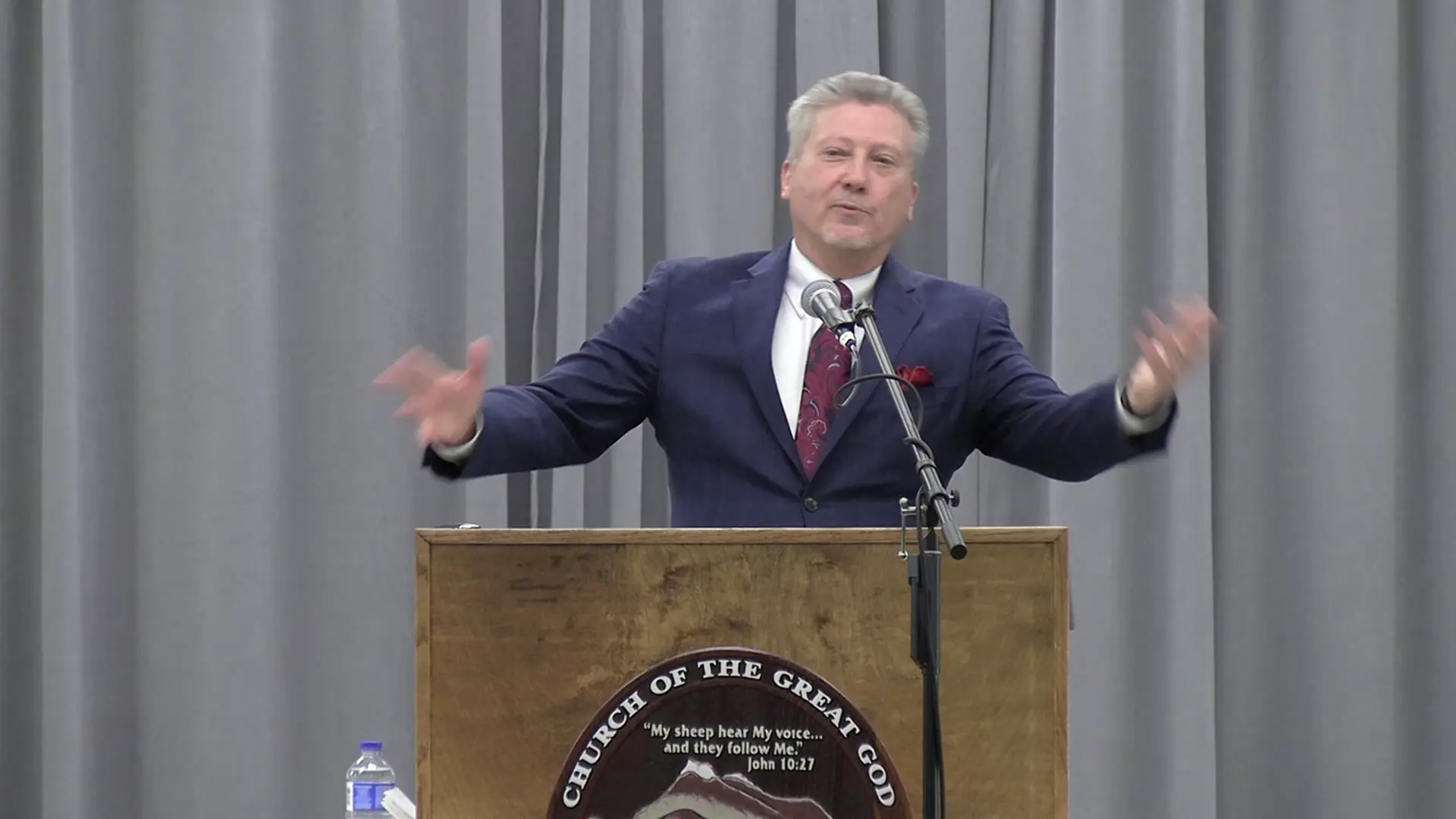Filter by Categories
The Sacred Assemblies (Part Two)
CGG Weekly by David C. GrabbeThe phrase "sacred assembly," found in the instructions for both the Last Day of Unleavened Bread and the Eighth Day, translates to atzeret (H6116; plural atzerote). The root of this word, atsar, embodies the concepts of closing, stopping, restraining, and retaining, which helps illuminate the purpose of these sacred assemblies. These holy days conclude weeklong festivals during which we abstain from daily activities and absorb vital lessons that God desires us to retain. In the Prophets, the atzerote appear significantly, underscoring God's intent for them as part of His charge against Israel and Judah regarding their use of the holy days. Amos 5:21 records God declaring to the northern kingdom of Israel that He hates and despises their feast days and does not savor their sacred assemblies, narrowing His focus specifically to the atzerote that close Unleavened Bread and Tabernacles. Similarly, Isaiah 1:13 states that God cannot endure iniquity alongside the sacred meeting, atzeret, indicating His rejection of these assemblies due to the people's contrary behavior throughout the year. The sense conveyed is that God finds their assembling before Him meaningless because they fail to retain the lessons intended by the atzerote. The concept of retaining, inherent in the root of atzeret, suggests that the people were not using these sacred assemblies properly, as they came to the feasts but retained nothing of value.
The Sacred Assemblies (Part One)
CGG Weekly by David C. GrabbeWithin God's instructions for His annual holy days, a significant detail emerges regarding sacred assemblies. The Hebrew word translated as sacred assembly is 'atsarah' (H6116). An 'atsarah' is a holy convocation with a special purpose. The law specifically designates just two sacred assemblies, both occurring at the end of week-long festivals. The Last Day of Unleavened Bread is commanded to have a sacred assembly, but it is the Eighth Day, immediately following the Feast of Tabernacles, that is most often associated with a sacred assembly. The placement of the Eighth Day suggests that the entire progression of holy day observances is closed and their instruction should be retained in our minds.
The Sacred Assemblies (Part Three)
CGG Weekly by David C. GrabbeThe Hebrew word *atsarah* (H6116), translated as sacred assembly, is specific to the Last Day of Unleavened Bread and the Eighth Day, carrying the connotation of closing, stopping, restraining, and retaining. This implies that these holy days are times to refrain from commonplace activities and to learn and remember spiritual principles that God desires for His people. In prophecies found in Amos and Isaiah, *atsarah* appears in negative contexts, revealing God's displeasure with Israel's sacred assemblies due to their failure to observe them as He intended, showing that they kept the feasts but did not retain the lessons for daily life. In Joel, an *atsarah* is highlighted as a critical moment deciding the nation's fate amidst a devastating locust plague, foreshadowing both the Babylonian invasion and the future Day of the Lord. This sacred assembly was so urgent that no one, not even the elderly, babies, or newlyweds, was exempted, as the nation stood on the brink of destruction with its only hope lying in turning wholeheartedly to God. Joel 2:15 connects *atsarah* to a sequence possibly reflecting the fall holy days, with a trumpet, a fast, and a sacred assembly, akin to the closing of the Feast of Tabernacles, or it may indicate an emergency assembly due to the severity of the crisis. The purpose of this gathering was for the people to make supplications to God, with the potential blessing of restored ability to serve through offerings, prioritizing worship over physical sustenance. The sacred assembly in Joel emphasizes the need for the people to close the feasts with seriousness, retaining what they learned from appearing before God to resist worldly pulls. The importance of these assemblies lies in grasping and retaining the spiritual insights gained from appearing before God, allowing His teachings to reorient and transform, so that the fruit of such gatherings glorifies Him.
The Sacred Assemblies
Sermonette by David C. GrabbeThe Last Day of Unleavened Bread and the Eighth Day are the only designated "sacred assemblies," which require a greater degree of solemnity for reflection.
Lessons From the Eighth Day
Sermonette by David C. GrabbeThe Eighth Day is a festival which concludes God's Holy Day cycle. While Scripture seems to give very few direct instructions, deeper study reveals it is a culminating and sacred assembly (atzeret) focused not on rejoicing or sacrifices, but instead on retention, reflection, and renewal. The Eighth Day connotes both completion and new beginnings. Biblically, the number eight signifies abundance, regeneration, and new life, as we see in circumcision, priestly consecration, and purification laws, all of which identify transition from preparation to fulfillment. For example, for seven days, God's people dwell in temporary booths, feasting and learning, but on the Eighth Day, they pause solemnly to retain what was gained, dedicating themselves anew to God. This solemn day depicts the ultimate fulfillment of God's divine plan. Just as the priests, after seven days of consecration, saw the glory of God appear on the eighth day, similarly, after 7000 years of human history, finally the Eighth Millennium will dawn, when all creation is made new, death is destroyed, and God dwells eternally with His people (Revelation 21). Consequently, we must reflect on what God has produced in us, offering ourselves as His portion, entering a new beginning of consecrated service, anticipating the time when God is all in all, making abundance, joy, and perfection eternally complete.

Holy Days: The Eighth Day
Bible Study by Richard T. RitenbaughThe Eighth Day, the year's final holy day, pictures the time after the Millennium. God will complete His plan by offering eternal life to all humanity.

Jesus in the Feasts (Part Six): The Eighth Day
Feast of Tabernacles Sermon by Richard T. RitenbaughThe Eighth Day encapsulates the fullness of God's divine plan through Christ, who embodies and fulfills every lesson, hope, and promise depicted in the holy days.
John 7:37 Examined (Part One)
Feast of Tabernacles Sermon by John W. Ritenbaugh (1932-2023)The Hebrew term *'atsarah* (H6116), often translated as "sacred assembly" or "holy convocation," is significant in understanding the biblical festivals, particularly the eighth day following the Feast of Tabernacles. This term is used in the Old Testament to describe the nature of this day, which is mentioned only five times: Leviticus 23:36, Leviticus 23:39, Numbers 29:35, II Chronicles 7:9, and Nehemiah 8:18. Unlike other feast days, this eighth day, referred to as Shemini Atzeret, lacks a specific name or detailed instructions in the Old Testament, leaving its purpose unclear without additional context. Shemini Atzeret, embodying the meaning of *'atsarah*, signifies a solemn gathering distinct from the seven days of the Feast of Tabernacles. The Feast of Tabernacles is explicitly defined as lasting seven days, as seen in Leviticus 23:34 and 23:42, and the eighth day stands apart as a separate festival with its own unique significance. This separation is further evidenced by historical practices, such as the people of Jerusalem dismantling their booths on the afternoon of the seventh day, indicating a return to their homes and a clear distinction from the eighth day. The lack of explicit meaning for this day in the Old Testament is highlighted by Jewish perspectives, which describe it as a holy day in search of a cause. While other festivals have associated events or instructions, Shemini Atzeret, marked by *'atsarah*, remains undefined in purpose within the Old Testament alone. Its true significance and connection to broader themes are understood only through additional revelation beyond the scope of the original commands.